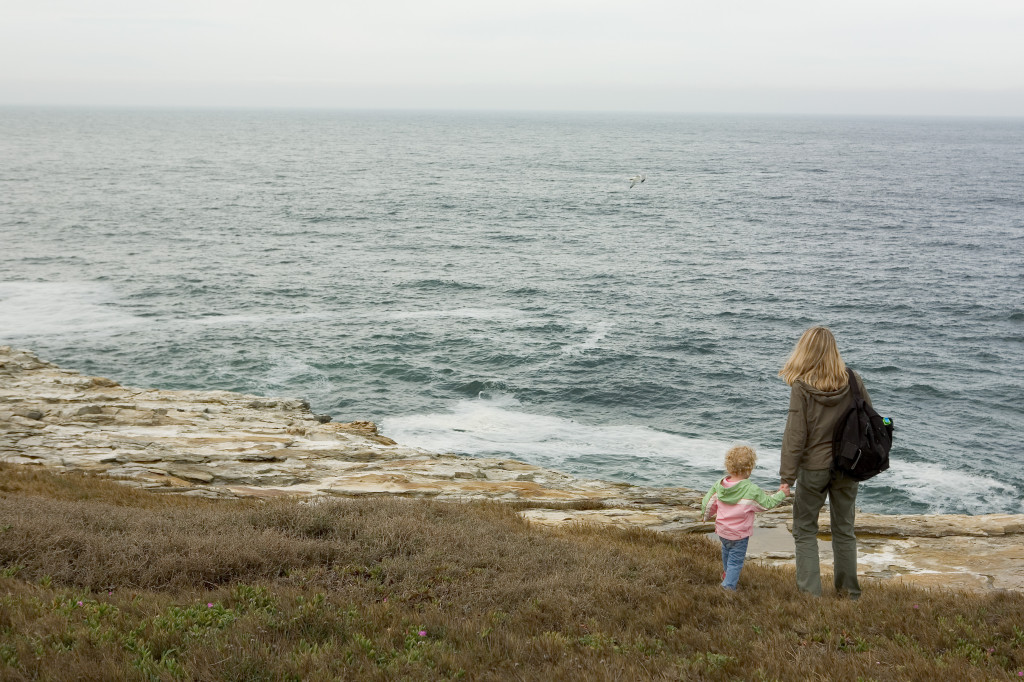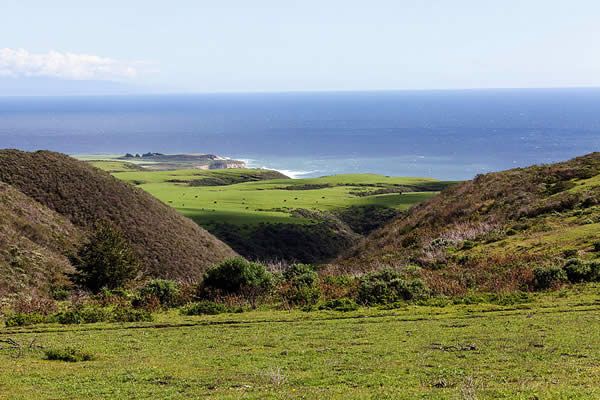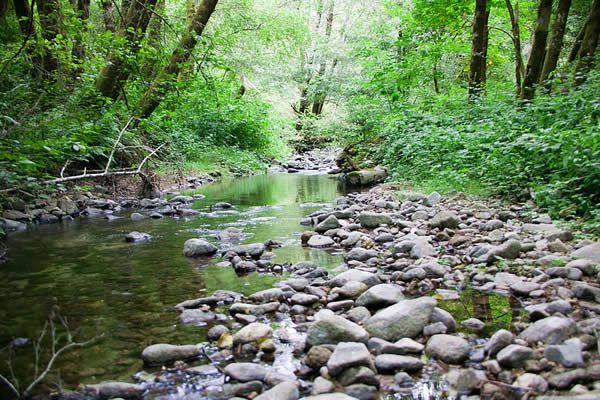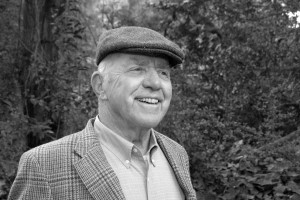You can color more green on your Central Coast conservation map.
Last month the federal Bureau of Land Management (BLM) took over the Coast Dairies property, a spectacular swath of land that spans Highway 1 just 8 miles south of the elephant seal enclave of Ano Nuevo State Park near Santa Cruz. The big parcel touches part of the CEMEX Redwoods property, creating a connection between 14,282 acres of conservation land that hasn’t been open to the public for more than a hundred years. If all goes according to BLM plans, two hiking trails may be cleared for public use by the end of the year and many more are expected to open in the future.
Much of the 6,800-acre Coast Dairies site has been closed to the public since two Swiss families combined their land grant properties in 1902 to graze cattle, run a dairy and raise crops. When the original landowners returned to their native country, the resource-rich land was still leased out for agricultural use. Then, in the 1970s, PG&E optioned the land to put a nuclear power plant on the ocean bluffs just north of Davenport — that is, until a seismic survey showed the area wasn’t stable enough for that.
Oddly, that survey didn’t stop a developer from picking up the property with plans to build 139 luxury homes. To stop the land from becoming a subdivision, almost every major land conservation group in the San Francisco Bay area — and some beyond — stepped in to preserve this green swath of territory.
It’s been a long battle to save the land that surrounds the town of Davenport, the epicenter of the “Slow Coast,” a term locals coined to convey a quieter way of life that prevails along the scenic stretch from Santa Cruz to Half Moon Bay.
“It’s taken about 114 years of effort on the part of a lot of people,” said Reed Holderman, executive director of Los Altos-based Sempervirens Fund. “We’re almost back to having the self-sustaining land it was more than a century ago.”

On April 16, it became official. Trust for Public Land, a San Francisco-based nonprofit that helps communities conserve land nationwide, transferred 5,750 acres to BLM. Before the land can be opened for public use, a long-term management plan needs to be put in place. But Hollister BLM manager Rick Cooper said he hoped to get people hiking on the Liddell Creek and Molina Pasture trails before the start of next year.
Although the original Coast Dairies deed covered around 6,800 acres, some of that land has already been parceled out. More than 400 acres, mostly on the ocean side of Highway 1, was transferred to the California State Parks in 2006. Another 700-plus acres remains under the ownership of the Coast Dairies & Land Company for agricultural use, according to the BLM.
A 2012 California Coastal Commission report that was prepared in preparation for this land transfer noted:
“This is an important property, not only for its range of resources and associated values, but also in terms of its sheer size and its relationship to the north Santa Cruz County coast viewshed and open space values. The north Santa Cruz coast area represents the grandeur of a bygone (in many places) agrarian wilderness in California …”

Now preserved, the property puts a big green patch along the coast. Five significantly-sized open spaces surround the Coast Dairies land: Big Basin Redwoods State Park, the Bonny Doon Ecological Preserve, Henry Cowell Redwoods State Park, Wilder Ranch State Park,and the CEMEX Redwoods. A wildlife corridor traversed by mountain lions, coyotes, deer, and countless other creatures is also better connected.
With the CEMEX Redwoods property sitting on the northeast shoulder of the Coast Dairies land, another 8,532 acres could be added to recreational opportunities, too. More than 70 miles of unpaved roads criss-cross the parcel, which runs up Empire Grade from Highway 1. It has a tree line spiked with Douglas fir, redwoods, live oak, Pacific madrones, and the endangered Anderson’s manzanita. The acreage is also home to the California red-legged frog, federally endangered plant species such as the Santa Cruz wallflower, and two insects only found in these hills: the Mount Hermon June beetle and the Zayante band-winged grasshopper.

A coalition of groups rallied to help the Sempervirens Fund and the Peninsula Open Space Trust take title to the CEMEX land (but not the cement plant) for $30 million after its last owners, the Mexico-based CEMEX company, shuttered operations in 2010. But unlike the Coast Dairies deal, this property is slated to stay in private hands. So, a conservation easement needs to be obtained before plans for public access can move ahead.
“It’s important for wildlife, but it’s also important for people,” said Holderman, also the former executive director of the Trust for Public Lands. “To be able to go from the ocean up to the top of Empire Grade is a long and beautiful hike through a redwood forest. It took me two hours to mountain bike down.”

Although the Coast Dairies land has many special conditions attached to its transfer (such as not allowing commercial logging or fracking) no one wants to take any chances on what the future may bring. The Conservation Lands Foundation, headquartered in Colorado, is also pushing for National Monument status. With that status comes a level of visibility that conservationists hope will provide protection if budget cuts arise. Advocates are optimistic because the Stornetta Public Lands near Point Arena were designated as a National Monument in March and they led to a similarly successful pitch for Fort Ord in Monterey in 2012.
“It deserves national attention,” said Holderman. “It’s like nowhere else. There are species that travel thousands of miles to get here — whales, marbled murrelets, elephant seals — and it’s right in our backyard.”





